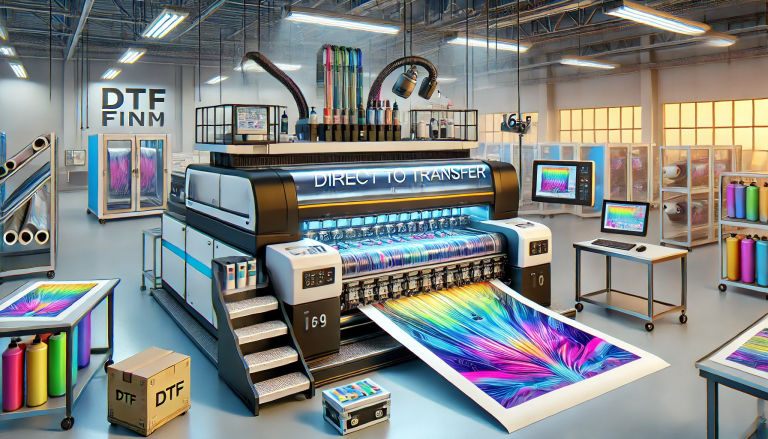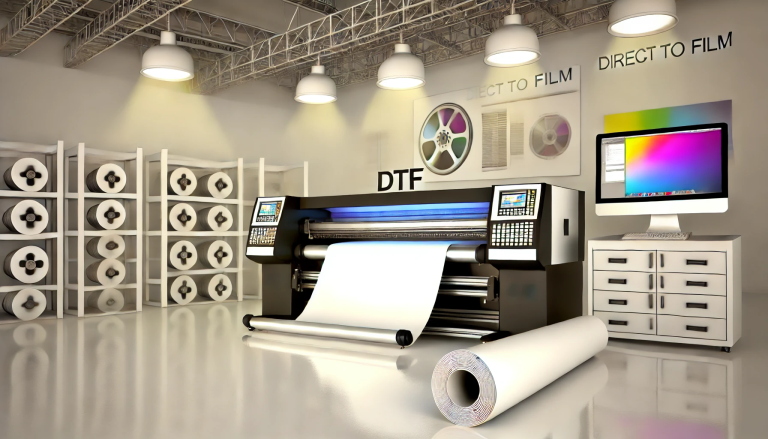“Unlock the Power of PET Film for DTF Printing!” -MAXDTF- A3 DTF Film Supplier, DTF glossy Film Factory, Made in china
Introduction
PET Film para DTF stands for Polyethylene Terephthalate Film for Direct Film Printing. It is a type of plastic film that is used in a variety of applications, from packaging to printing. It is a versatile material that is strong, lightweight, and resistant to moisture, chemicals, and heat. It is also an economical choice for many applications. This article will provide an overview of PET Film para DTF, its uses, and its advantages.
Understanding the Basics of PET Film for DTF Printing: What You Need to Know
PET film is a versatile material that is used in a variety of applications, including direct-to-film (DTF) printing. It is a polyester film that is strong, durable, and resistant to heat, chemicals, and moisture. It is also lightweight and easy to work with, making it an ideal choice for a variety of printing projects.
When it comes to DTF printing, PET film is an excellent choice. It is compatible with a wide range of inks and can be printed on both solvent and UV-curable inks. It is also compatible with a variety of substrates, including paper, vinyl, and fabric. Additionally, PET film is available in a variety of thicknesses, allowing you to choose the right material for your project.
When selecting PET film for DTF printing, it is important to consider the type of ink you will be using. Solvent-based inks are generally the best choice for PET film, as they provide the most vibrant colors and the best adhesion. UV-curable inks can also be used, but they tend to be more expensive and require specialized equipment.
In addition to selecting the right ink, it is also important to consider the type of substrate you will be printing on. PET film is compatible with a variety of substrates, but some may require special coatings or treatments to ensure the best results. It is also important to consider the thickness of the PET film you will be using. Thicker films are more durable and can provide better protection against scratches and other damage.
Finally, it is important to consider the cost of PET film for DTF printing. PET film is generally more expensive than other types of film, but it is also more durable and provides better protection against damage. Additionally, PET film is often available in bulk, which can help to reduce costs.
Overall, PET film is an excellent choice for DTF printing. It is strong, durable, and resistant to heat, chemicals, and moisture. It is also lightweight and easy to work with, making it an ideal choice for a variety of printing projects. When selecting PET film for DTF printing, it is important to consider the type of ink you will be using, the type of substrate you will be printing on, and the thickness of the film. Additionally, it is important to consider the cost of PET film for DTF printing. With the right selection, PET film can provide excellent results for your printing projects.
How PET Film Can Enhance Your Digital Printing Projects
Digital printing projects can be enhanced with the use of PET film. PET (polyethylene terephthalate) film is a type of plastic film that is strong, lightweight, and resistant to moisture, chemicals, and heat. It is also highly transparent, making it an ideal choice for digital printing projects.
PET film can be used to create a variety of effects, including matte, glossy, and textured finishes. It can also be used to create a variety of colors, including metallic and fluorescent. The film is also available in a variety of thicknesses, allowing for a range of printing options.
PET film is also highly durable, making it an ideal choice for projects that require long-term use. It is also resistant to fading, making it a great choice for projects that require long-term colorfastness.
PET film is also easy to work with. It can be cut, laminated, and die-cut to create a variety of shapes and sizes. It can also be used to create custom labels and stickers.
Finally, PET film is an economical choice for digital printing projects. It is available in a variety of sizes and thicknesses, making it an affordable option for projects of any size.
Overall, PET film is an ideal choice for digital printing projects. It is strong, lightweight, and resistant to moisture, chemicals, and heat. It is also highly transparent, making it an ideal choice for creating a variety of effects. Additionally, it is highly durable and resistant to fading, making it a great choice for projects that require long-term use. Finally, it is an economical choice for digital printing projects, making it an affordable option for projects of any size.
Exploring the Benefits of PET Film for Direct-to-Film Printing
Direct-to-film printing is a process that involves printing directly onto a film substrate, such as polyester (PET) film. This method of printing offers a number of advantages over traditional printing methods, including cost savings, faster turnaround times, and improved image quality. In this article, we will explore the benefits of using PET film for direct-to-film printing.
One of the primary advantages of using PET film for direct-to-film printing is its cost-effectiveness. PET film is a relatively inexpensive material, making it an ideal choice for large-scale printing projects. Additionally, PET film is lightweight and easy to transport, which can help to reduce shipping costs.
Another benefit of using PET film for direct-to-film printing is its durability. PET film is highly resistant to tearing, scratching, and other forms of damage, making it an ideal choice for projects that require long-term durability. Additionally, PET film is resistant to fading, which can help to ensure that printed images remain vibrant and clear for years to come.
Finally, PET film is an excellent choice for direct-to-film printing due to its high image quality. PET film is capable of producing sharp, vibrant images with excellent color accuracy. Additionally, PET film is compatible with a wide range of printing technologies, including inkjet, laser, and thermal transfer. This makes it an ideal choice for projects that require high-quality images.
In conclusion, PET film is an excellent choice for direct-to-film printing due to its cost-effectiveness, durability, and high image quality. By utilizing PET film for direct-to-film printing, businesses can save money, reduce turnaround times, and produce high-quality images that will last for years to come.
Conclusion
In conclusion, PET Film para DTF is a type of plastic film that is used for digital textile printing. It is a durable and versatile material that is suitable for a variety of applications, including apparel, home décor, and signage. It is also an environmentally friendly option, as it is recyclable and does not contain any hazardous chemicals.




